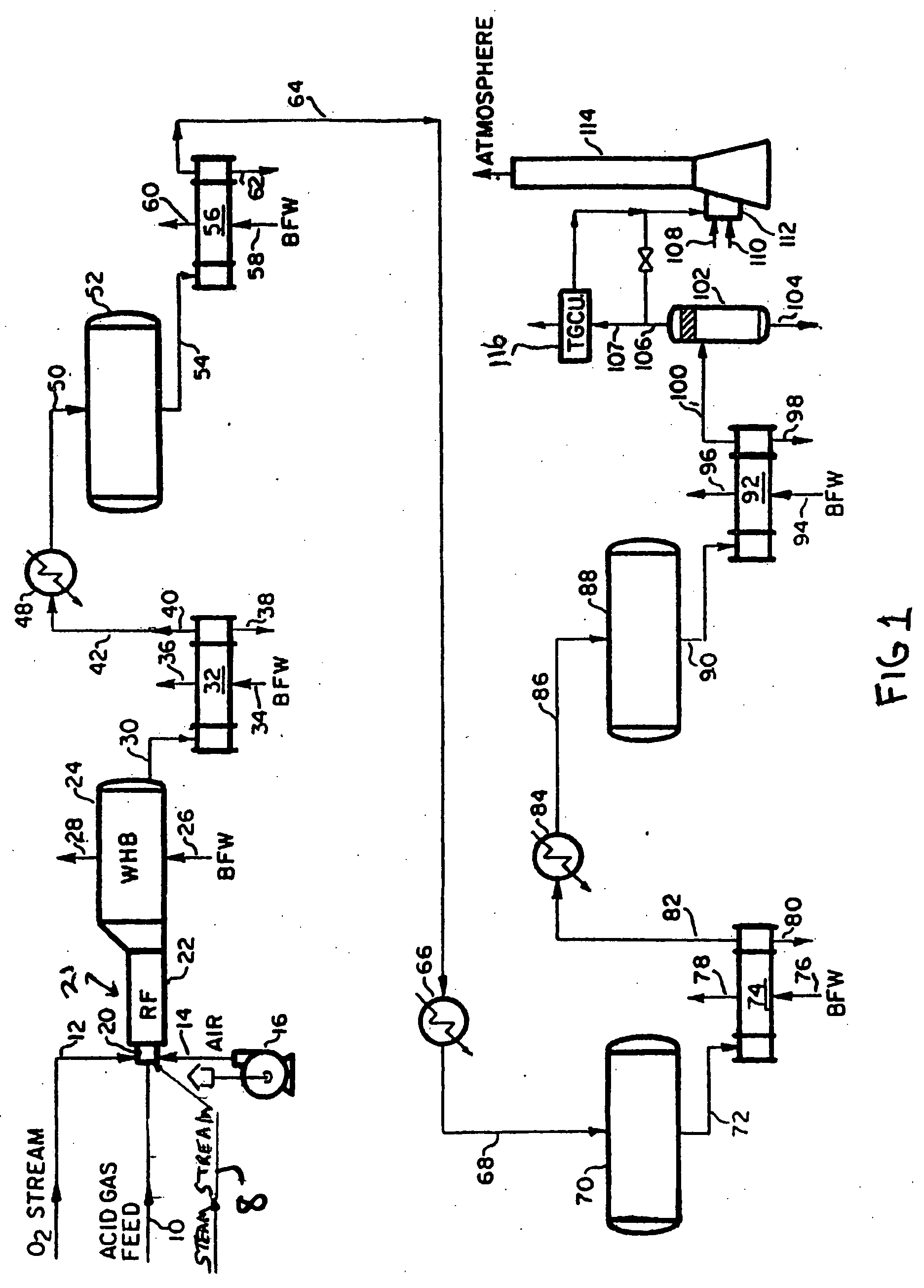Steam modified Claus process
a technology of claus plant and steam, applied in the field of chemical arts, can solve the problems of less attractive known oil reserves being processed, less attractive oil reserves having high sulfur content, or being subject to being fully loaded or subject to being fully loaded, etc., to achieve the effect of minimizing the amount of air required, simple and effective, and maximizing the feed rate of acid gas stream
- Summary
- Abstract
- Description
- Claims
- Application Information
AI Technical Summary
Benefits of technology
Problems solved by technology
Method used
Image
Examples
Embodiment Construction
[0019] Particular embodiments of the invention are described below in considerable detail for the purpose of illustrating its principles and operation. However, various modifications may be made, and the scope of the invention is not limited to the exemplary embodiments described below. For example, in the embodiments described below, there is described a reaction furnace that includes both a burner and a reaction chamber and the reactants are introduced into the burner. However, one skilled in the art will understand that the reactants can be introduced directly into a reaction chamber. Similarly, in the embodiments described below, only one acid gas feed stream is shown. One skilled in the art will understand that the acid gas can be supplied in one or more streams.
[0020] Shown in FIG. 1 is a Claus reactor system in accordance with the invention. An acid gas feed stream rich in H2S is introduced from an acid gas source, such as the acid gas produced by a petroleum refining plant ...
PUM
 Login to View More
Login to View More Abstract
Description
Claims
Application Information
 Login to View More
Login to View More - R&D
- Intellectual Property
- Life Sciences
- Materials
- Tech Scout
- Unparalleled Data Quality
- Higher Quality Content
- 60% Fewer Hallucinations
Browse by: Latest US Patents, China's latest patents, Technical Efficacy Thesaurus, Application Domain, Technology Topic, Popular Technical Reports.
© 2025 PatSnap. All rights reserved.Legal|Privacy policy|Modern Slavery Act Transparency Statement|Sitemap|About US| Contact US: help@patsnap.com

